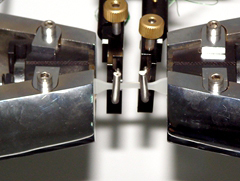The Big World of Polyurethane 3: What are physical properties of polyurethane?
 The
mechanical properties of polyurethane elastomers are very good, which are shown
in Young's modulus, tensile strength, tear strength and load capacity.
The
mechanical properties of polyurethane elastomers are very good, which are shown
in Young's modulus, tensile strength, tear strength and load capacity.
Young's
modulus and tensile strength are within the elastic limit. The ratio of tensile
stress to deformation is called Young's modulus (E) or elastic modulus. When
the hardness is Shaul D42 and the tensile stress is 2.25 MPa at 2.5%
elongation, the Young's modulus of the polyurethane elastomer is the same as
that of other elastomers, and Hooke's theorem is obeyed only at low elongation.
But its Young's modulus is much higher than other elastomers. Taking Vulkollan
polyurethane elastomer series products developed by Bayer Company in Germany as
an example, for materials with 65A hardness, the elongation at break under
elastic limit is about 5%, and the Young's modulus is about 5 MPa. For
materials with 70D hardness, the above data are 2% and 600 MPa, respectively.
The tensile strength of polyurethane elastomer is as high as 70 MPa, which is
not comparable to that of rubber plastics. However, the reason for permanent
deformation is that the tensile strength exceeds the elastic limit, especially
the dynamic load.
The tear
strength of polyurethane elastomer is very high, which is more than twice that
of natural rubber.
Although the
compressive strength of polyurethane elastomer is not high and the load
capacity is not large at low hardness, the hardness of polyurethane elastomer
can be increased while the elasticity of rubber is maintained, thus achieving
high load capacity. Moreover, the compressive stress of polyurethane elastomer
increases faster with the increase of compression ratio than that of
styrene-butadiene and chloroprene rubber.










